Being a successful hunter in Monster Hunter: World requires more than just knowing how to use your weapon or which items to bring — it’ll take plenty research. I’m not talking research in the traditional sense where you look up strategies for creating armor sets or defeating specific monsters, I mean literal research that can be done in game.
Though there’s no experience points in the game, there are research points and they can be used in a variety of manners, such as paying for food or helping you track down monsters faster. Similarly, you don’t actually have to defeat any monsters to earn any research points, all you have to do is locate anything they leave behind, like feathers or mucus.
Knowing the various ways to utilize research will vastly improve your efficiency while on the hunt and will even make fighting the monsters you track down easier.
Here’s everything you need to know about research and what it’s used for:
Types Of Research Points
There are actually two types of research points that hunters will earn while in the midst of travels: generic and monster-specific.
— Generic: These can be earned by doing various mundane tasks such as collecting endemic flora and fauna. You only earn a few points at a time, but since there are so many things to capture and collect, those points will add up rather quickly. This is quite fortunate, as they are basically used like currency and can be used to purchase various goods and surfaces in Astera.
— Monster-Specific: These are earned by examining the various tracks, claw marks and other things that monsters leave behind as they roam about the area. Though they are easier to earn in general, these points are only applied to the monster who left behind the specific marker you examined (i.e. examining a Pukei-Pukei trail only increases research levels for the Pukei-Pukei). Since your scoutflies are the ones who actually point out a monster’s trail to you, they also benefit from this process.
All in all, so long as your inventory allows it (which is almost always), collect or examine anything that you come across.
Generic Research
After you collect generic research points, you’ll need to spend it.
— Palico Equipment: You can go to the Smithy’s Workshop and use points (along with monster parts) to purchase new gear for your Palico companion.
— Canteen: You can use points to purchase meals at the Canteen while at base camp when out on the field.
— Botanical Research: Later on in the story (after the eighth story mission), you’ll be able to unlock this feature in Astera. Go to the Chief Botanist and spend these points to purchase items such as fertilizer.
Monster-Specific Research
As mentioned before, monster-specific research can be earned by tracking monsters then discovering and defeating them. However, unlike generic research where you gain the benefits immediately, you’ll need to visit the Chief Ecologist before he can compile the data you collected out on the field.
He’s located on 1F of Astera in front of a bunch of books. Just head directly south from the lift (if you’re facing it) and walk up a small flight of stairs on your left.
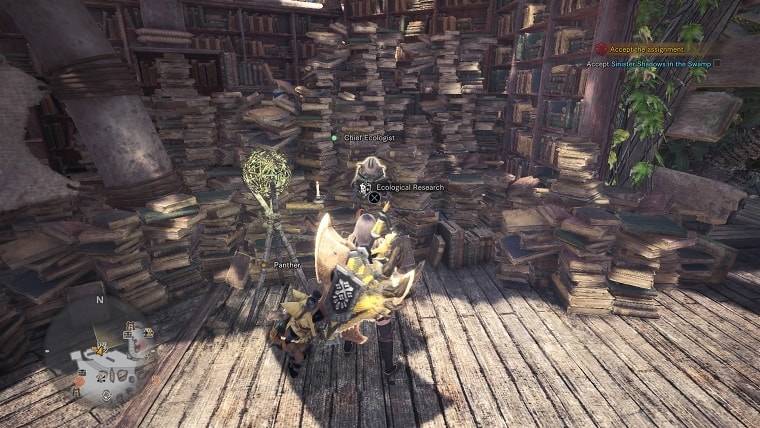
Improving your research level yields two primary benefits:
— Detailed Hunter’s Notes: If you go to the menu screen and head to the info tab, you’ll find a small monster compendium that features info about the various monsters you’ve come across. As a monster’s research level increases, the Hunter’s Notes will steadily fill up with information such as its weak points, elemental weakness, status susceptibility and carves/drops.
— Scoutfly Level: As your monster research level increases, your scoutflies will level up along with it, allowing them to track monsters down more effectively. Furthermore, the higher the monster research level, the faster your scoutflies level will rise.
Scoutfly Level
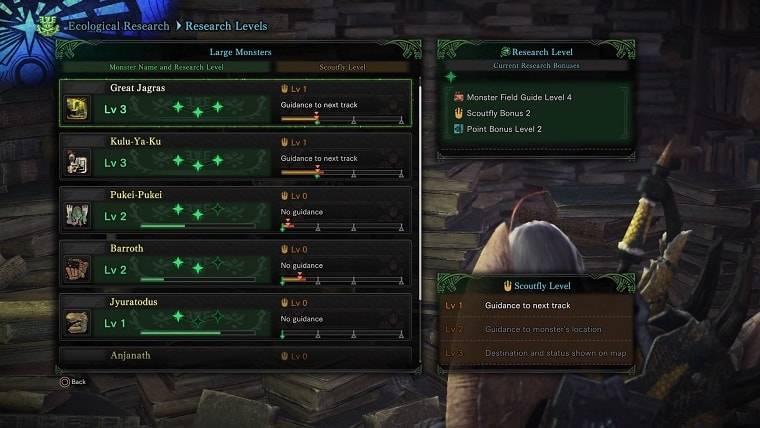
Scoutflies are initially only able to illuminate a monster’s track, but increasing their level enhances their range of detection, increasing their level of precision and info they’re able to relay to you while on the hunt. Just like with monster-specific research, the scoutflies level is only applicable on a “monster-per-monster” basis, so their ability to track down a Pukei-Pukei has no bearing on its ability to track a Great Jagras.
There are three levels:
— Level 1: Your scoutflies will lead you to the next monster trace along a monster’s trail.
— Level 2: Your scoutflies will lead you directly to the monster.
— Level 3: The monster and its status will appear on your map.
That’s everything about research you need to know about researching about Monster Hunter: World. IMO, its one of the best new features Capcom introduced here because it genuinely makes it feel like you’re a part of a world where you’re hunting a monster, rather than just chancing upon them. Even though research levels are important, they’re very easy to gain, so it’s just a matter of sticking it out and being diligent. Happy Hunting!
Need help with something else? Head to the Hunter’s Index to find more guides.


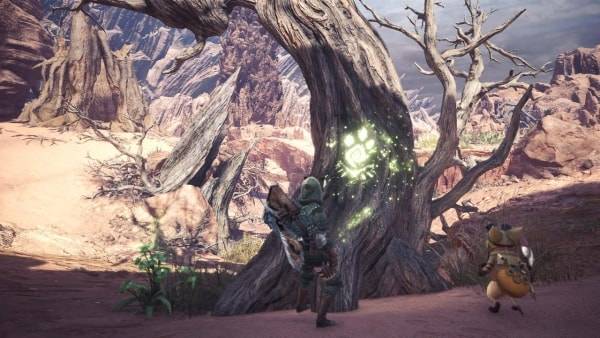



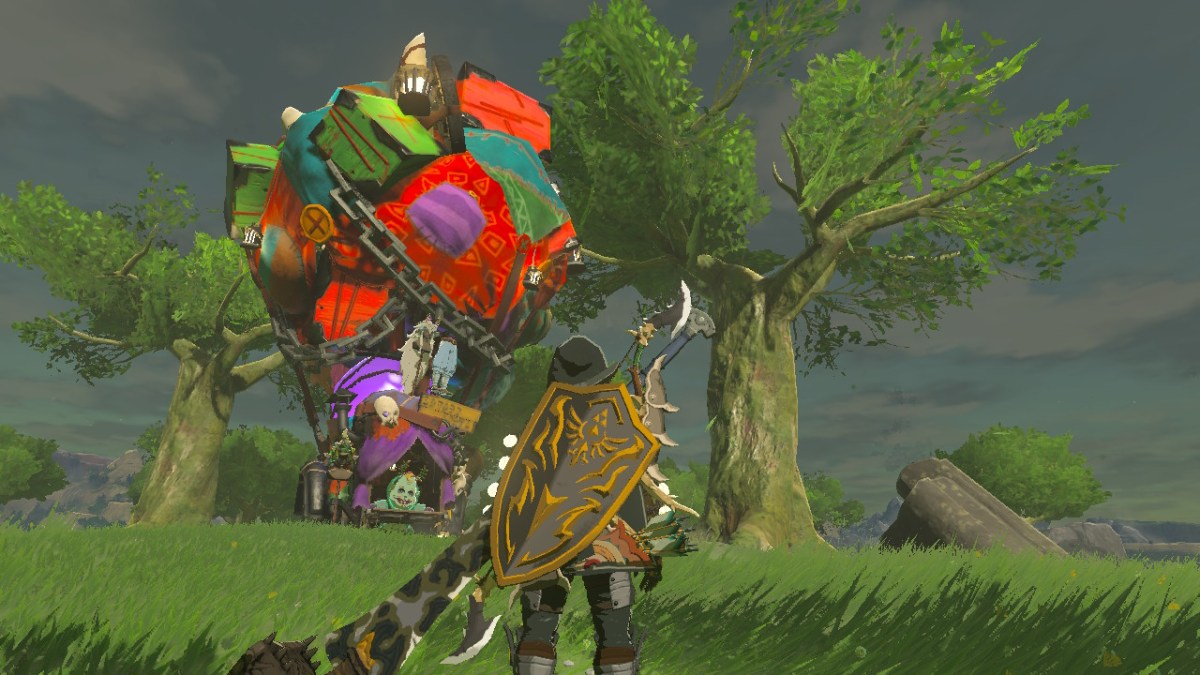



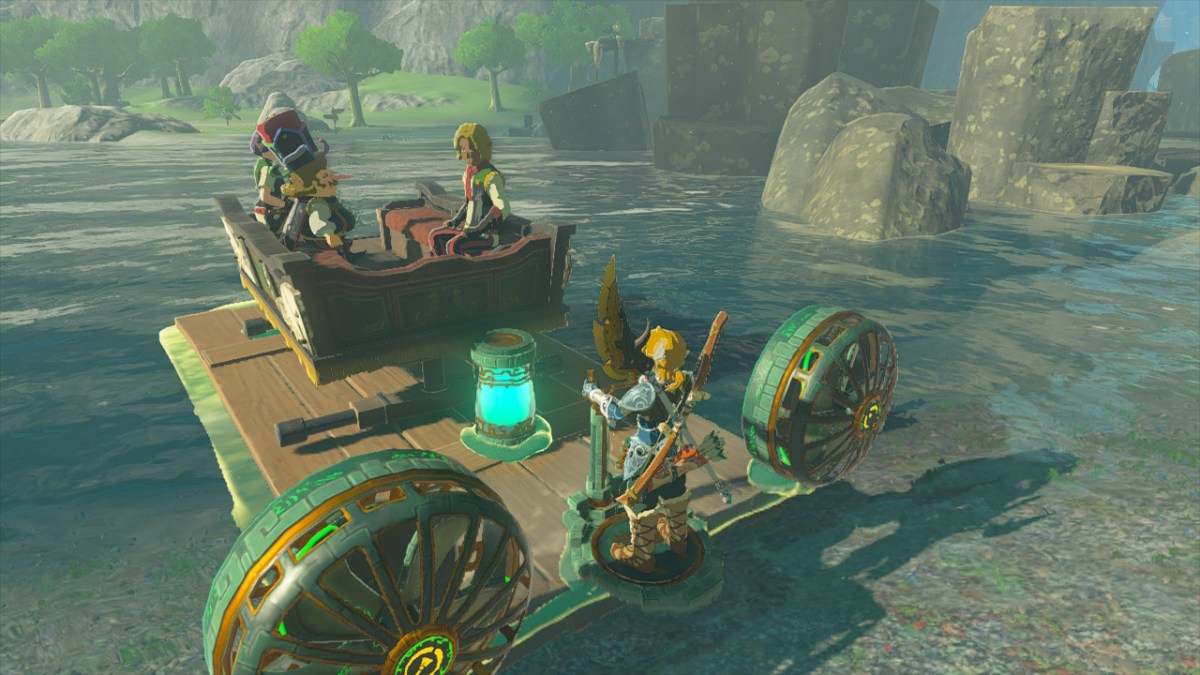
Published: Jan 26, 2018 08:24 am